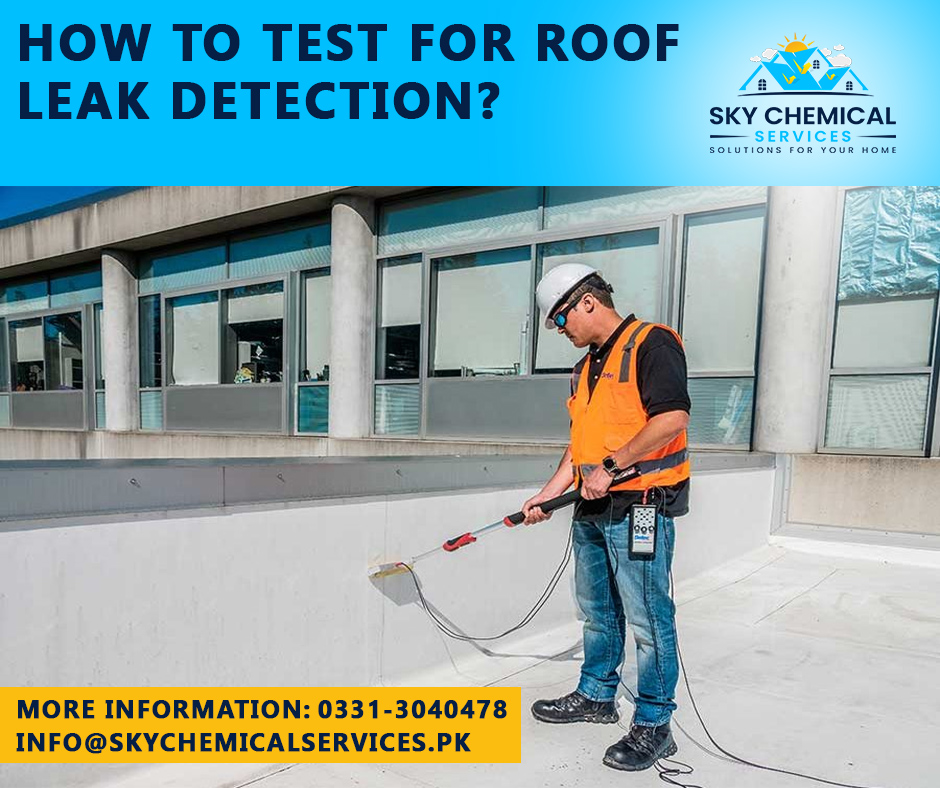
Tired of water droppings from the roof? Well, you’ve reached the right place. In this blog, we will discuss various methods for roof leak detection.
Visual Inspection
Visual inspection is necessary in detecting roof leaks. It allows experts to identify issues, such as cracked shingles, pooling water, and warped flashing. To conduct a thorough visual inspection, follow the below-mentioned steps:
- Use binoculars to inspect the roof from the ground. Look for missing, damaged, or displaced shingles or tiles.
- Check for cracks, gaps, or deterioration in the flashing around chimneys, vents, skylights, and other roof penetrations.
- Inspect the gutters and downspouts for debris, clogs, or signs of water overflow.
- Look for algae, moss, or mold growth; these living organisms indicate excessive moisture and potential leaks.
- Check the ceilings and walls for water stains, discoloration, or peeling paint.
- Examine the attic for dampness, mold, or water stains on insulation, rafters, and sheathing.
Read More
How to Calculate the Cost for Roof Leakage Treatment in Karachi
How Much Time Does it Take to Apply Roof Seepage Solution in Pakistan
How to Find the Best Roof Seepage Solution in Karachi?
Hose Test
The hose test is a simple and effective method to identify specific areas of roof leakage.
Testing Procedure
- With the help of an assistant, stand on the roof leak detection and start at the lowest point.
- Use a garden hose to spray water on different sections of the roof while the assistant stays inside to observe for any signs of water entry.
- Focus on roof penetrations, seams, and areas where leaks are likely to occur, such as vents, chimneys, and skylights.
Infrared Thermography
Infrared thermography is a non-destructive method that utilizes thermal imaging cameras to detect temperature variations on the top surface. Trapped water (beneath the roof) retains heat in a different way than drier areas, allowing for identification of potential leaks. Here’s how infrared thermography works:
Conduct the inspection during evening or early morning when temperature differentials are greater.
After detection (with thermal imaging cameras), areas with temperature anomalies are identified as potential leak points.
Read More
Tools Used to Apply Roof Leakage Treatment in Pakistan
How Does Waterproofing Help Fix Water Tank Leakage & Seepage in Karachi?
What to Expect from Roof Cool Services in Pakistan?
Moisture Meters
Moisture meters are valuable tools for detecting moisture content in roofing materials, such as insulation and sheathing. High moisture levels indicate the presence of a roof leak.
How to Use a Moisture Meter?
- Read the user manual to understand its features, settings, and instructions for your model.
- Ensure the moisture meter is charged fully. If applicable, select the appropriate material type (e.g., wood, drywall, concrete) on the meter.
- Some meters may require calibration to provide accurate readings. Follow the manufacturer’s instructions for the calibration process.
- Identify the leaking area
- For pin-type moisture meters, insert the pins into the material being tested. Ensure that the contact is made properly.
- Depending on the meter, it can provide instant readings on a digital display. Record the moisture percentage or moisture level displayed on the screen.
- Compare the readings with the recommended moisture levels for the material. Excessive moisture levels may indicate water damage or other potential issues.
- Repeat if necessary
- Clean the meter’s pins or sensors as per the manufacturer’s instructions. Store the moisture meter in a safe and dry place.
Smoke Test
The smoke test is useful for detecting hard-to-find roof leaks. The smoke particles are used to observe the movement and pinpoint leak detections.
Testing Procedure
Close all openings in the attic or roof space.
Use a smoke machine to introduce gas particles into the space.
Observe the movement of smoke; look for areas where the gas is escaping from.
Dye Test
The dye test is used to identify leaks in flat or low-sloped roofs. Colored dyes are used to trace the path of water infiltration.
Testing Procedure
Clean the roof surface to ensure no debris obstructs the test.
Apply a colored dye or leak detection solution to the suspected leak area or the entire roof surface.
Observe the path of the dye to identify the leak.
Conclusion
Early detection of roof leaks is essential to prevent extensive damage to buildings. A combination of visual inspection, advanced methods like infrared thermography and moisture meters, and targeted tests such as the hose, smoke, and dye, can help identify leaks and facilitate timely repairs. Regular roof maintenance and periodic inspections by qualified professionals are vital in maintaining the integrity of the roof and ensuring its longevity.
Contact Sky Chemical Services for more information on leaks and detection.
